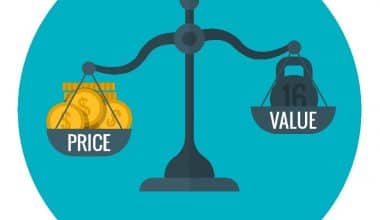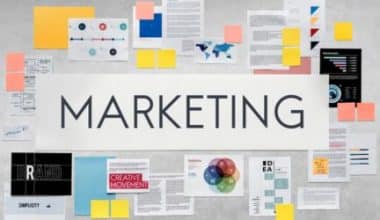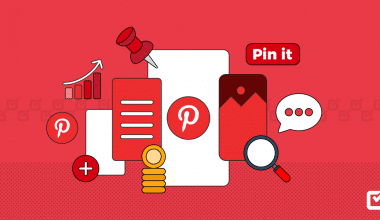On a good day, you’d normally not want to purchase a certain kind of item or service but because of the persuading call to action strategy used by the marketer, you couldn’t just help it. Now, that’s the magic and psychology of marketing—persuading prospective buyers to patronize whatever you’re selling or writing. If you’re wondering why you’ve not had more customers as anticipated, then you probably need this magical strategy. However, with some examples, you’ll come to an understanding of what call to action is, in this article.
Continue reading
What is Call to Action (CTA)
When a user sees and consumes your material, you’ll most likely want them to take action, such as reading another blog post, purchasing something, or downloading anything.
That said, a call to action (CTA) is a marketing word that refers to the next step that a marketer would like its audience take. The CTA can be linked directly to sales. It could, for example, instruct the buyer to click the buy button to complete a sale, or it could just move the audience closer to being a consumer of that company’s goods or services.
In order for it to be effective, a call to action should be visible and appear shortly after the marketing content.
Reason for Call to Action
As a marketer, your marketing goals may include increasing revenue for your brand, raising brand awareness, and spreading your brand message. When running a marketing campaign, success can be defined as an increase in profits, subscriptions, social reach, or sales leads.
CTAs entice your audience to take certain action. With a successful CTA, you can rapidly obtain someone’s contact information and add them to your marketing funnel.
#1. CTAs Inspire Your Sales Funnel
CTAs and sales funnels complement each other. A call to action functions as a bridge between the stages of the buyer’s journey. They inform the user on what to do next, urging them to act quickly. You must induce this action with a well-placed CTA in the sales funnel if you want your user to visit your blog, give you their contact information, download an e-book, or subscribe to an email list. Use CTA best practices, such as crafting the language on your button to emphasize the benefits. Use “Get More Tips” instead of “Subscribe!” for example.
The easier you make it for people to take the next step, the more likely they are to do so. Your CTA improves the user experience. Instead of leaving your audience to speculate and wonder how to proceed, you provide the solution in the form of an eye-catching, brightly colored button that directs them to the next stage of the purchasing process. You’ve provided your customers with the quickest path to the next step, removing the need for them to solve a problem. Buyers are trained to look for and use CTAs. Allow for a simple purchasing transaction by offering consumers exactly what they want.
#2. CTAs Help Digital Advertising Succeed
Digital advertising is all about creating buzz about your product or service, capturing consumers’ attention, and enticing them to buy. The call to action is the missing puzzle piece that accentuates the ad copy’s impact. Without a call to action, your copy messaging will fall flat. It will lack the final hook that will entice customers to take the next step. Calls to action (CTAs) are extremely crucial in pay-per-click (PPC) advertising. Including a call to action in your PPC campaign can assist you communicate the campaign’s objective to your target audience.
Often, you only have one chance to make a solid first impression on your target audience. There is no time to waste with PPC ads and other forms of digital advertising. Even the tiniest lost opportunity can cause clients to choose the competitors over your brand. During the construction of ad campaigns, emphasize the need of a powerful, exciting call to action to your marketing team. Make the CTA the focus of your ad creative. Otherwise, you risk having your campaign fall on deaf ears. Most businesses cannot afford to take this risk.
#3. Customers Want CTAs
CTAs are vital not only for businesses, but also for customers. Many people rely on the call to action at the bottom of the page to take the next step. They’ve read your ad copy, are curious in your brand, and are looking for the CTA button to understand what to do next. Omitting the CTA can confuse readers and reduce your chances of converting them. Customers can easily accomplish what you want them to do when you use CTA buttons. That is both beneficial to them and beneficial to business.
There are times when you need your brand to be predictable. Predictability establishes your organization as trustworthy and easy to work with. The CTA is one area where being as predictable and intuitive as possible pays off. Visitors are confused and dissatisfied when they cannot discover your “Call Now!” or other CTA button. The campaign will include strong calls to action on social media, websites, at the end of videos, copy message, digital advertising, and elsewhere.
Other reasons may include:
CTAs reduce decision-making uncertainty.
You communicate to your prospective clients what to do and where to go by employing a simple directive phrase, making the user experience crystal obvious. Your call to action should clear up any uncertainty so that your website visitor can take the next step.
They improve your audience and sales.
CTAs serves as a leverage for your business requirements, whether it’s “Follow me on…” or “Submit payment.” Your call to action is dependent on what is most important to you at the time. Every piece of content with a CTA, whether it’s social media postings, articles, or static landing sites, becomes a potent marketing weapon.
CTAs determine and direct the reader’s wants.
By clearly defining your call to action, there is no doubt as to what the content is about, and the reader isn’t left clicking away out of misunderstanding or apathy. Your content piques the reader’s curiosity and excitement, and your CTA entices them to learn more or become a paying customer. If you are unsure about your readers’ needs, your digital approach may need to be revised.
Call to Action Strategies
It is obvious that a smart CTA marketing strategy is the quickest way to quadruple your conversion rates, generate leads for your products or services, and much more.
#1. Lead Magnet CTAs
A lead magnet CTA is anything you give away in exchange for a website visitor’s contact information. It could be ebook, a checklist, cheat sheet, email course, or spreadsheet—whatever your target audience finds useful.
Lead magnets always increase the number of people who subscribe to your newsletter. While a standard newsletter CTA offers a vague benefit in the future, a lead magnet CTA offers a specific benefit immediately. The ability to tailor the call to action (CTA) to each individual page is one of the primary reasons that lead magnet CTAs are more successful than generic newsletter subscriptions.
#2. Purchase CTAs
You want people to buy straight from you if you run an online store, provide software, information items, or prepackaged service packages. To a large extent, the nature of your product or website will determine how you arrange your call-to-action buttons for making purchases.
Keep in mind that:
- Customers of an online shop need to be able to peruse inventory. There could be several “Add to Cart” buttons for various items.
- CTAs are essential for any software company offering several pricing tiers.
- Info product websites are more likely to use in-depth sales pages, landing pages, and email marketing. One CTA would be used for all of these.
#3. Landing Pages
Landing pages are focused on getting the visitor to take one specific action. This can involve providing contact information such as name and email address in order to join a mailing list or sign up for an upcoming event.
The call to action (CTA) on a landing page, which typically offers a freebie in exchange for the visitor’s information, can read “download for free.”
#4. PPC
PPC is an abbreviation for pay-per-click, a digital advertising technique in which the advertiser pays a fee each time one of their adverts is clicked. In essence, you are paying for targeted traffic to your website (or landing page or app). When PPC works properly, the charge is insignificant because the click is worth more than what you spend for it.
PPC CTAs come in a variety of styles and sizes, and can be made up of text, images, videos, or a combination of the three. They can be found on search engines, websites, social media platforms, and other places.
#5. SEO Meta Description
A page’s summary can be found in the HTML element known as “meta description.” Meta descriptions accompanying search results can double as call to action, however, this may not be immediately obvious. Search engine results pages (SERPs) often include a snippet of text from a page’s meta description tag to offer users a taste of the page’s content and how it pertains to their query.
A user will check the meta description to see if your page is helpful. You just have 160 characters to convince them.
Some Call to Action Examples
You may have seen or even compelled by some of the following call to action examples
- Buy now
- Download now
- Get 50% off your first purchase
- Claim your limited-time offer
- Shop now and save
- You can’t afford to miss out
- Book your appointment now
- Subscribe to a premium content
- Find a plan for you
- Sign for free
- Act Now
How to Write a Cool CTA
The phrases you use in your CTA are crucial. Be specific about what you want your users to do. You don’t want your CTA to be misleading. If you want someone to use your services, make sure you understand the following:
#1. Competitor Analysis
Using the Market Explorer tool, you may locate your competitors and do a thorough competitor study. Visit your competitors, examine their CTAs, and see if you feel forced to act.
CTA competitor analysis can be used in a variety of ways. You may either see what works and duplicate it, or you can identify a market gap and design a CTA strategy around it. Do something that your competitors aren’t.
#2. Use Emotional Language
After researching your competition, try utilizing phrases that elicit emotion and, ultimately, action. Can you identify a problem and provide a solution or offer assistance? Can you provide an escape from the cold weather as a travel agent? What about a calm vacation, perhaps?
Provide these solutions and communicate them in an emotive CTA, and you might just be doing something your competitors aren’t, even better.
#3. Provide the users with an Opportunity for Action Through Writing.
Verbs can also elicit an action from the user. ‘Don’t miss out,’ ‘click here,’ and ‘purchase now’ are all examples of action-based CTAs. These CTAs make a strong statement: you should click this button right now!
A sense of urgency, as well as the dread of missing out, can be effective here. ‘Time is running out,’ ‘just few left in stock,’ and similar statements might reinvigorate the need to act swiftly.
Summary
The acronym “CTA” stands for “Call To Action.” It is a marketing word that refers to designs that are intended to provoke an immediate response or a sale. CTAs such as “Sign up now” “Read more” “Buy now” etc are most typically used to drive a specific action in sales scripts, advertising messaging, and website copy. They are frequently shown as images, buttons, or hyperlinks.
Use the CTA to motivate your audience to take serious steps towards becoming a customer or client.
Related Articles
FREE LANDING PAGE: 11 Best Free Landing Page Builders to Grow Your Online Business
10 Tips for Marketing Your SaaS Business Online
BANNER ADVERTISING: How It Works With Examples
Email List For Marketing: How To Build An Email List(






